
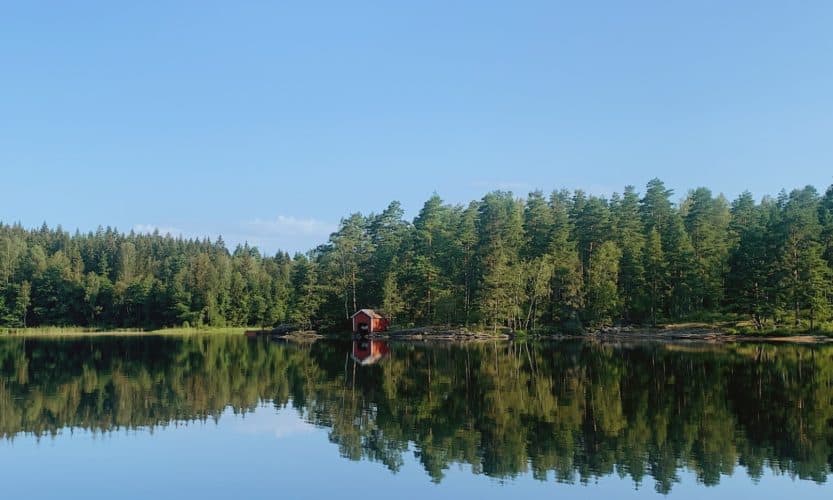
After a year of being unable to travel far and wide, European borders started opening up again this summer. Me and a friend I met in India two years ago had booked a camping trip in Sweden last summer, which was cancelled (and I don’t think I need to tell you why). Luckily, our adventure was simply postponed 12 months, and we happily boarded the sleeper bus bound for Sweden just over a month ago.
As I mentioned above, our story starts — quite literally — at the other side of the world. Laura and I had both individually booked tickets for a group tour in India. It immediately became clear that we got along great, and we spent a lot of time together in India.
Related: Sleeping Under The Stars After A Camel Safari
After that trip ended, things quieted down for a while, until I saw an Instagram ad for another trip: seven days of canoeing and camping in the Swedish wilderness. I asked Laura if she would be interested in going on this trip with me, and she enthusiastically agreed to come along for the ride.
And so, we both opened the K-Jak website and booked our tickets for the bus trip to Blöm-Fox. The pandemic postponed our trip, but that just meant that we were able to look forward to our big adventure for more than a year. It also meant that we were ready for anything Sweden was going to throw our way. And that brings me to …
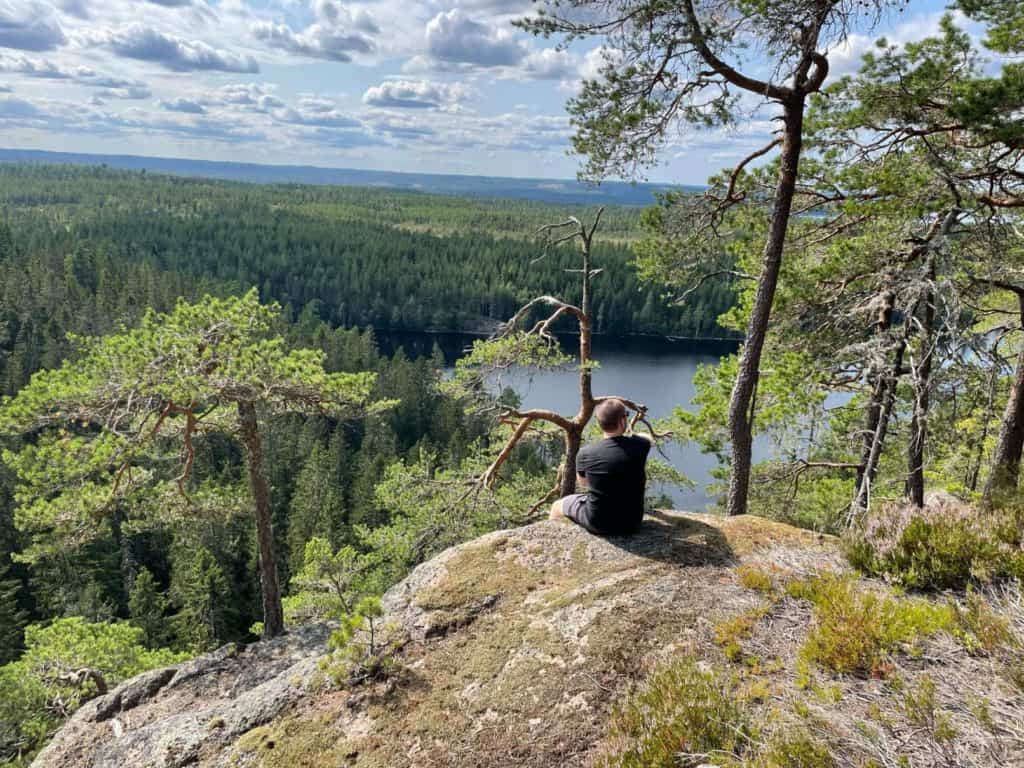
Why wouldn’t we?
We knew this trip would take place in Dalsland — also known as the Swedish Lake District. Dalsland didn’t get its name randomly. The region boasts more lakes than almost any other province in Sweden. In other words: it’s the perfect place to go camping for two adventurous souls from Belgium.
Sweden is generally an expensive country to travel to, mostly due to high costs for local transport, accommodation and activities. However, since we spent all of our time in the wild, our wallets didn’t suffer too much from the strong Swedish economy.
Related: Budgeting for Solo Travel — Tips & Tricks to Save Money
After a while, the question was no longer ‘Should we go camping in Sweden?’, but ‘When can we leave?’.
Before I get to the lessons I learned in Sweden, let me show you what it was like in a short, vertical travel video. (Best watched on mobile screens!)
As anyone who has gone camping will tell you, you need to be ready for anything to happen. Extreme weather circumstances, broken or malfunctioning material, food that has gone bad, … You name it, campers have survived it.
We were not afraid to set up camp in a forest during a thunderstorm, because we knew we had a solid tent that would keep us dry and warm. We took a little too much food with us, just in case something happened and we would need more than we had calculated.
A campsite off a Swedish lake is not the place for strong principles.
You need to live with the fact that your food won’t taste as good as when you’re cooking your favourite dish at home with fresh vegetables and herbs. Sometimes, you just need to live with edible, or ‘yeah, it’s alright’.
You might be used to sleeping with your significant other or a friend next to you, but you’ll need to be okay with sharing a tent with bugs when you go camping.
On the bright side: when there are no principles holding you back, your problem-solving skills drastically improve. You get more creative when looking for solutions to the everyday issues you face, and that’s ultimately a good thing.
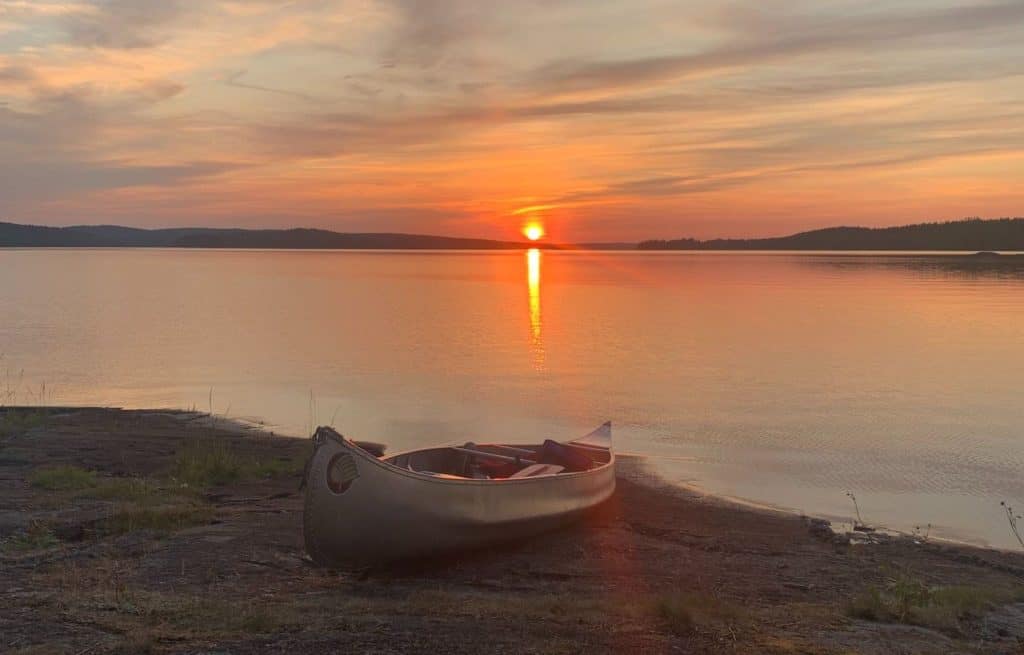
In situations like ‘camping in Sweden’ — as well as in many other travel-related scenarios — proper material tends to be on the more expensive side of things.
In these cases, it is absolutely worth it to spend a few more euros, dollars, pounds or [insert your currency here] for that extra quality.
Tents, knives, backpacks, cooking material and hiking shoes are just a few of the things that you don’t want to skimp on. These things will ultimately save you money because they last years if you treat them properly — which you automatically will, knowing how much money they cost you in the first place.
In our case, specifically, we especially had to be prepared for weather-related issues. Overall, we were very lucky to have had good weather on six of our days in Sweden.
But we spent seven days in the canoe.
There was one day where the rain started pouring down from the sky at around 3 PM, while we were still a few kilometres from our destination for the day. We had to disembark and watch from the shore as the rain slowly accumulated in the canoe.
After about half an hour, the rainfall decreased and we headed towards our campsite again — desperately using our baggage’s rain cover to avoid our clothes getting wet.
Standing in the forest and helplessly watching the boat get wet was not the best experience at the time, but it ended up being a great story to tell at parties.
Standing still is going backwards.
At least, that’s what we say in Dutch. It might not make a lot of sense in English, but it essentially comes down to this: if you don’t keep going, you may as well turn back.
You’d be surprised how many situations this expression applies to.
One of those situations is camping and canoeing in Sweden. Laura and I were the only group out of 10-ish who chose the long route, so we constantly had to force ourselves to just go a few more kilometres before setting up camp.
At the time, it was exhausting to know that we were the only ones in our group who were forced to push ourselves like this. But looking back on it now, we can both confidently say it was worth it.
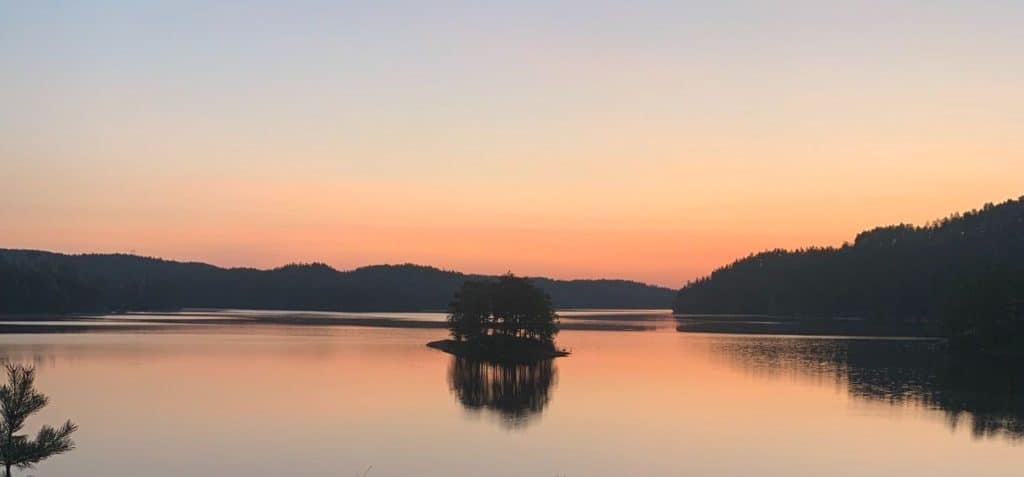
In a two-person canoe, you quite literally cannot do it on your own. You need one another to keep the boat balanced and to make moving forward easier.
Off the water, teamwork makes all aspects of camping easier.
Cooking food? One person washes and cuts the vegetables while the other starts the fire and fills a pot with water to cook rice or pasta in.
Setting up the tent? One person unrolls the tent and stakes down the corners while the other finds — or makes — a flat area with no sharp objects.
You may get into an argument with your travel buddy at times (which we miraculously didn’t), but in the end, you need them and they need you.
If you know me at all, you’ll know that this is not a new development. I also didn’t particularly enjoy my experience with sleeper trains in India.
The concept was cool — I’m on the other side of the world and I’m using a means of transport I’m not used to. But my quality of sleep suffered greatly then, and it suffered again on the way to Sweden.
Seats that can’t fully recline, 50 travellers ready to embark on the adventure of a lifetime, and roads that could use some maintenance. Truly a recipe for disaster if you’re trying to get a few hours of sleep.
I tell myself it was part of the experience to make the memory of the sleeper bus bearable. But the truth is: I’m simply not made for sleeper buses.
The short answer: yes. I would recommend a trip like this to anyone who even remotely likes adventure and exploration.
If you’re still reading this blog post, I can guarantee you’ll like this trip. That, or you’re my very supportive grandpa who reads everything I write. (Love you, grandpa!)
Take a chance on yourself and book the camping trip. You won’t regret it.
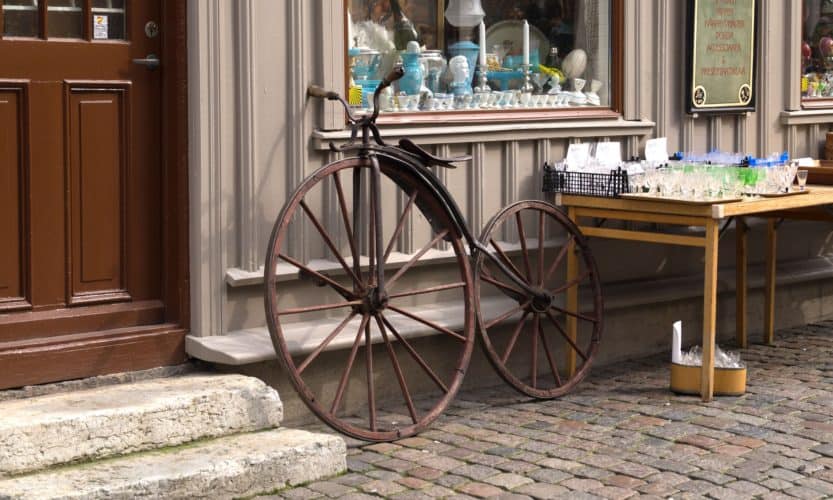
Göteborg – also known as Gothenburg – is too often overlooked in Scandinavian travel itineraries. However, as the second-biggest city in Sweden, it boasts over 800,000 inhabitants. So there must be some things to do there, right?
If Göteborg isn’t on your bucket list yet, you should put it on there. Here’s why.
Note: I got these insights from Margot, who was in this magnificent Swedish city between August 2016 and January 2017 for her Erasmus stay. You can take a look at her beautiful pictures on Instagram. Margot, if you’re reading this: thank you so much for giving me your inside tips about Göteborg and for allowing me to adapt and use the information you gave me for this post!
Without any further ado, let’s get right into it.
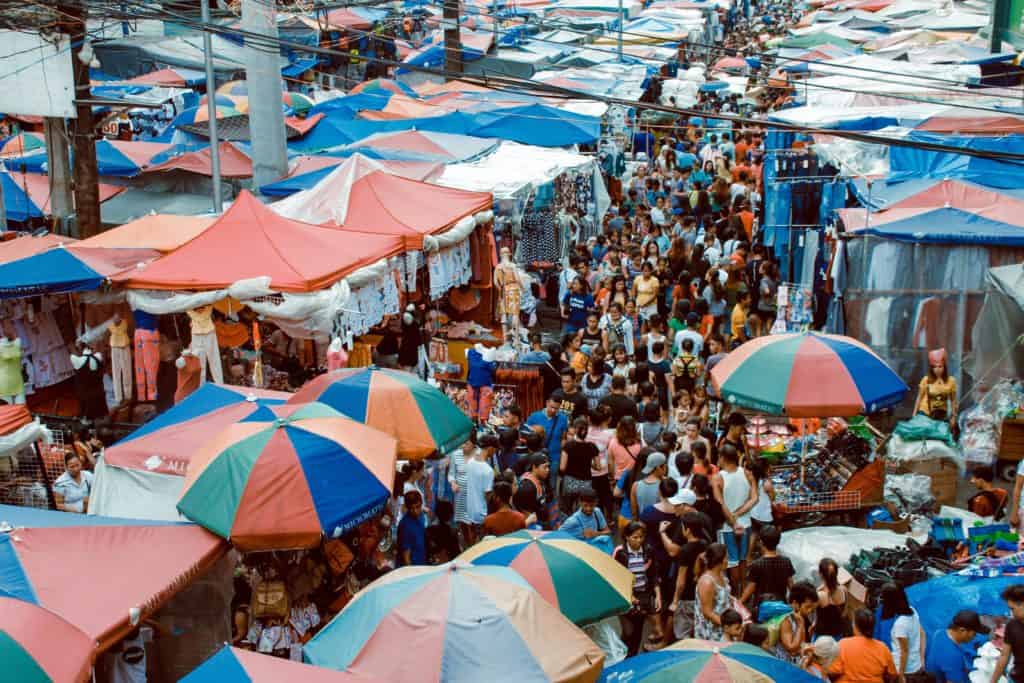
If there’s one thing the Swedish are good at – besides cinnamon rolls – it’s the flea markets. One way or another, it’s always much easier than you’d expect to find beautiful, original things at a great price.
There is a flea market where people sell things out of the trunk of their cars in Slottskogen between April and October. This flea market is known as the Drive-In-Loppis.
A suburb of Göteburg called Utby hosts the Utby Promenadloppis at the end of August, which is a lot of fun because the whole neighbourhood joins in and holds a little flea market in their garden.
On the last Sunday of May, there’s a megaloppis in Majorna, which is very much worth a visit as well.
Göteborg is preparing for its 400th birthday (yes, 400!). That’s going to happen in 2021. One of the festive projects that the city is working on is the construction of the Jubileumsparken. Right now, there’s already an outdoor swimming pool and a sauna which is available free of charge (and which is one of the architectural highlights of the park). If you want to spend some time in the sauna, you do have to make a reservation.
Unless you’re a big fan of ice hockey, you probably shouldn’t do this every week. However, it can be a lot of fun to attend an ice hockey game. The Swedish are obsessed with ice hockey and every game turns into a spectacle. Also, you’ll score a lot of bonus points if you can chat to the Göteborgare about the Frölunda Indians or the Växjö Lakers.
The bottom floor of the modern and pleasant Göteborg city library at Götaplatsen hosts a large collection of board games. There are chairs and tables for you to play a game of chess, Scrabble, or whatever tickles your fancy. Employees are there to help you and explain the rules to you. You can also do some good old console gaming in the same room. Fun fact: the library is open until 9 pm on weekdays (6 pm on the weekend). There’s a nice little cafe on the first floor for lunch and fika.
Liseberg is Scandinavia’s biggest amusement park. It’s especially fun to visit during the Christmas period and around Halloween. It’s decorated in a very retro way, which makes you feel like you’re in a Swedish film from the fifties.
Göteborg is not only for people who want to chill in the park and spend some time in a sauna, though. It also has many things, like museums and art galleries, to offer for those travellers looking for a more cultured trip.
This museum, which literally translates to “Art Museum of Göteborg”, has a very varied range of temporary modern exhibitions (think Bruce Nauman and Tove Jansson). There is also a permanent collection, which includes an entire floor dedicated to Scandinavian art. Inside of the museum, there is something called the Hasselblad Center, displaying different works of photography.
Alongside the museum, you can find Göteborgs Konsthall, where more modern art is displayed.
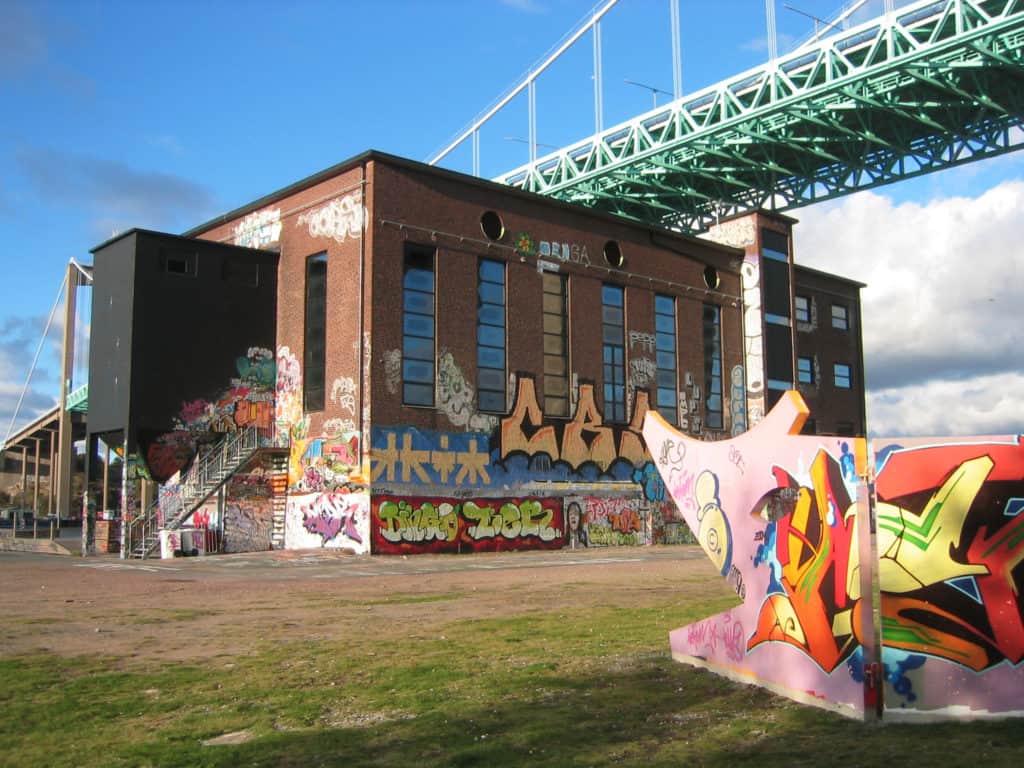
Photo credit: rodasten.com
Art gallery Röda Sten, located right under the green Älvsborgsbron bridge, is an art gallery that often displays modern art exhibitions about relevant, contemporary themes. Every week, the gallery also organises a free workshop for art enthusiasts under 26. There is also a restaurant and cafe inside – if there isn’t too much wind, the terrace is located perfectly along the river banks.
This museum is for anyone who wants to learn more about the history of Göteborg. Margot, for example, saw an exhibition about Göteborg as a city of music, and she learnt that the city used to be the jazz centre of Sweden and that Håkan Hellström is far from the only Swedish musician worth learning about.
Since eating, drinking and fika are very important to the Swedish people, the following list of cafes, restaurants, bistros and other cosy places to go will be quite extensive. As such, there will not be any explanation as to why they’re in this post, because they really don’t even need any explanation. The places are listed by neighbourhood.
Are you a nature enthusiast? Do you get energy from hanging out in green places and breathing fresh air? If so, Göteborg is the perfect place for you. It has plenty of nature-related things to do and visit. In this section, I’ll give you a selection of them.
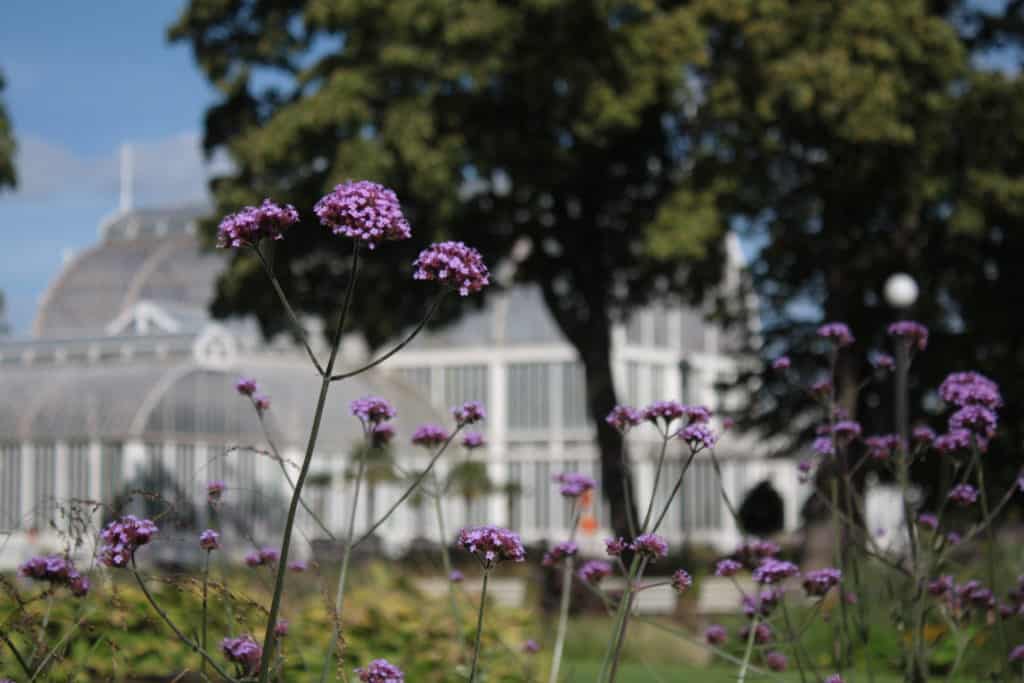
Photo by Margot
Palmhuset is an impressive 19th-century greenhouse right in the city centre. It’s incredibly popular among wedding planners and Instagrammers (seriously, just check the hashtag #palmhuset). In the central part of the greenhouse, you’ll find a stairway to an elevated platform where you can enjoy your home-made lunch in peace, surrounded by palm leaves. This platform can be a godsend on cold, rainy days when you just want to have an affordable lunch in an interesting location.
The park that houses Palmhuset is called Trädgårdsföreningen. Talk about a tongue twister. This park also has a rose garden, where you can find the Rosenkaféet, which also serves lunch and drinks.
Taking tram 11 heading toward Saltholmen will take you right to the quay where ferries go toward the Göteborg archipelago (Swedish: Göteborgs skärgård). The ferries are a part of the regular public transport network, so your season ticket, day ticket or three-day combo ticket should cover it. A regular ticket is valid for 90 minutes, which should get you a one-way trip, including the tram and the ferry, provided you have a little bit of luck with your timing. You can find more information about getting to the archipelago on the Swedish public transport website.
During the summer, you can take a trip to the archipelago to go swimming, but be cautious of the jellyfish. During the winter, you can go there to get some (really) fresh air. Styrsö, one of the main islands, has those pretty Pippi Longstocking houses (see pictures), as well as a vantage point called Stora Rös Café Öbergska at the Bratten quay.
Vrångö is a calmer island with nature reserves on either side (Norra & Södra Slingan), fit for short hikes with splendid views. On the east side of Norra Slingan, there’s a small sandy beach. Vrångö also has a vantage point called Lotsutkiken.
Fun fact: the inhabitants of this archipelago pretty much only move around using golf carts or motorised carrier cycles. And, if you’re lucky, you might even get to spot some wild animals.
Slottsskogen is Göteborg’s main park, featuring a free zoo that includes animals such as penguins and elk. Moreover, Slottsskogen is the best place to see the result of the Swedish paternity leave policy, as you can easily spot groups of men with baby buggies. A popular sport in this park is roller skiing, the off-snow equivalent of cross-country skiing (according to Wikipedia, at least).
Right across the street from Slottsskogen, you can find Göteborg’s botanical garden, entitled Göteborgs botaniska trädgård. It’s one of the biggest botanical gardens in Europe.
The gardens feature many small paths for visitors to explore, as well as thousands of species of plants to marvel at. Eventually, the paths will take you to the entrance of the nature reserve called Änggårdsbergen, where you can continue your hike. You could eventually make your way to Guldhedstornets Kafé, a fika place located on the top floor of a water tower that is still in use nowadays. This cafe, because of its high altitude, offers visitors a panorama view of the city.
At the east side of Göteborg is Delsjöområdet, a large nature reserve that is known for its many trees. Among local residents, it’s a popular place to go for a swim when temperatures allow it. Within this nature reserve, there are two lakes: Stora Delsjön and Lilla Delsjön. These lakes are easily accessible through public transport, although you’ll have to walk a fair bit to actually get there.
In the middle of Stora Delsjön, there is a rock right below the water surface. If you want to get an Instagram shot of you walking on water, this is your best bet. The two lakes are also the most accessible location to do some kayaking or hiking near the city.
Just like most other major cities around the world, Göteborg is full of history and interesting architectural concoctions. In the next part of this blog post, I’ll share some architectural places worth visiting with you.
The best vantage points to see the city itself are called Masthuggsberget and Ramberget. Both come with a considerable hike, but they’re definitely worth the effort. While both are located just outside of the city, Masthuggsberget is still a bit closer and will give you the most detailled view over Göteborg.
There are rocks around the church (Masthuggskyrkan) at Masthuggsberget, where you can take a walk and get a 360 degree view of the city.
Visiting Ramberget is very much recommended when there are fireworks along the river Göta älv. At that time, you’ll be able to see the entire skyline of Göteborg with fireworks in the background.
Skansen Kronan is also a popular vantage point due to its views and because it offers visitors an impressive look at the Oskar Fredriks kyrka (see below).
The most breathtaking walk in Göteborg has got to be the Göta Älv quay. Start your walk at Lilla Bommen (a very unique skyscraper that has been nicknamed “the lipstick”) and end in Maritiman (a free open-air museum with all kinds of old war ships), passing several landmarks on the way.
Those landmarks include Barken Viking (an old sailing ship), Göteborgs Gästhamn (old, red storage spaces where cafes and other hip spots can be found nowadays), Göteborgsoperan and some charming buildings with the typical copper-green towers.
Vasagatan is an avenue, named after king Gustav Vasa, filled with atypical but graceful late 19th century to early 20th century villas. At the junction of this street and Viktoriagatan, you will find a house called Tomtehuset, which roughly translates to “gnome house”. The house earned this name because of the mural paintings depicting gnomes as the first occupants of the house (an architect, a printer and a photographer).
In the middle of the street, there’s a walkway where you can go for a leisurely walk. If you do that, you’ll also pass the central university library, where you can go inside and take a quick look at the big reading room. The streets surrounding Vasagatan, such as Storgatan and Engelbreksgatan, also have some houses worth taking a look at. Outside the city centre, similar architecture can be found in the streets Berzeliigatan and Södra Vägen.
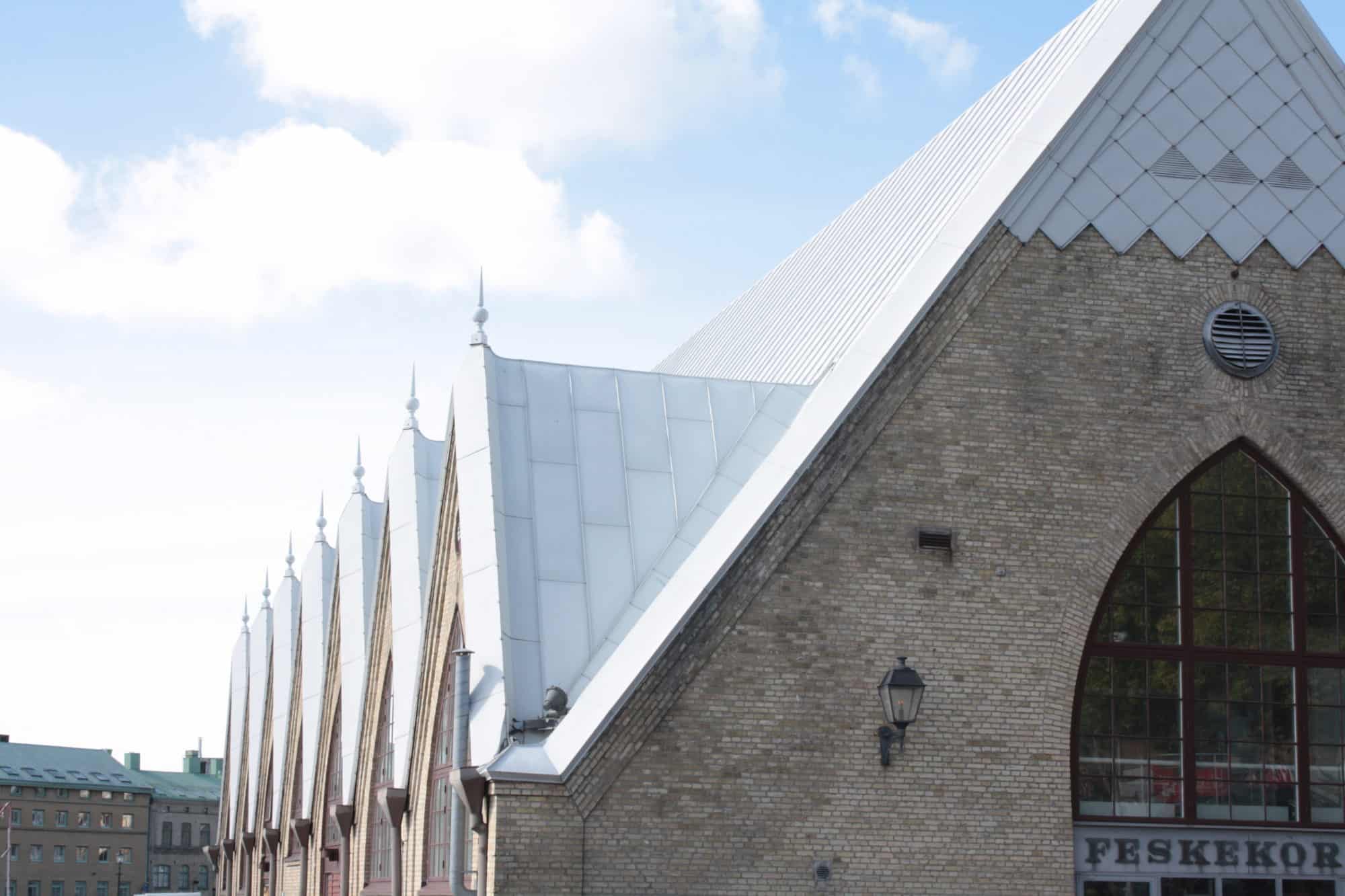 Feskekôrka is a word in Göteborg’s dialect, translated into English as “Fish church” – a very logical name for an indoor fish and shellfish market that looks like a church. It’s one of Göteborg’s most famous tourist attractions and it’s very likely that this is the only one that might ring a bell.
Feskekôrka is a word in Göteborg’s dialect, translated into English as “Fish church” – a very logical name for an indoor fish and shellfish market that looks like a church. It’s one of Göteborg’s most famous tourist attractions and it’s very likely that this is the only one that might ring a bell.
This is a beautiful church with a dark-red facade and copper-green and golden details. You’ll probably come along this church on your way to Masthuggsberget or you can see it from Skansen Kronan.
Göteborg is not only for architecture and nature enthusiasts, though. If you just want to find some good stores to hang out and buy some things, here’s a list of the best shops in Göteborg.
The most common shopping locations in Göteborg are without a doubt Nordstan (the biggest mall in all of Scandinavia, mostly featuring chain stores) and Inom Vallgraven (a larger area; the closer you get to Nordstan, the more chains you’ll come across). If you want to find stores that are less well-known to the general public, you might want to check out Magasinsgatan. For something between the two, you can probably get your fix in the streets between Östra and Västra Hamngatan.
For artisanal products, you’ll have to be in Kronhusbodarna (yellow houses around Kronhuset, Göteborg’s oldest building) and Haga (the old working-class neighbourhood; now a very touristy but convivial street with coffee shops and other stores). These neighbourhoods are great if you’re looking to buy souvenirs for friends back home (like winter sweaters and slippers).
Typical Swedish delicacies can be found in Saluhallen, the indoor market, or in one of the Kronhusbodarna, a candy store called Göteborgs Choklad & Karamellbutik.
Though Göteborg may have a lot to offer to its visitors, you might still want to take a look at the surrounding areas. That’s where a day trip can come in handy.
Marstrand is a small coastal city just north of Göteborg. Even more north are Fiskebäckskil, Lysekil and Fjällbacka, which might be nice places to combine for a day trip from Göteborg. It should take you about an hour to get from Göteborg to Marstrand using public transport.
Tjolohölms Slott is a castle located right along the coast, about 40 minutes south of Göteborg. Fun fact: this castle was used as a set for Lars von Trier’s film Melancholia.
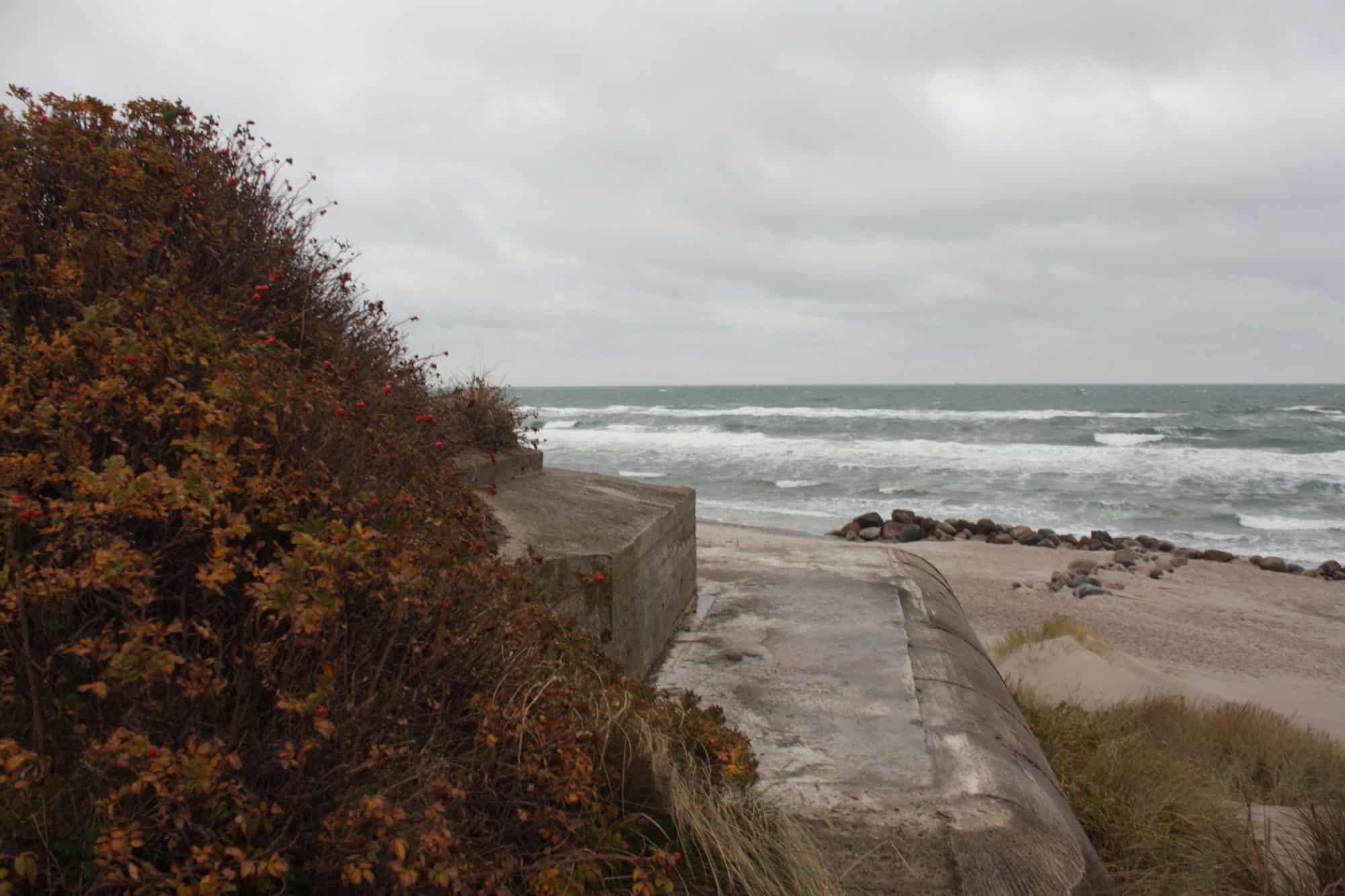
Visiting Skagen on a day trip from Göteborg is tough, but it’s so worth it. The ferry will take you to Frederikshavn for a very cheap price (if you’re not travelling by car), where you can take a train to the very north of Denmark. There, you can take the Sandormen (a tractor-slash-bus) to the place where Kattegat and Skagerrak meet and spot seals.
Skagen is also famous as the central city of the Skagen Painters (including Krøyer), whose paintings can be visited in Skagens Museum.
Last, but not least, you can also visit “den tilsandede kirke“, which literally translates to “the sand-covered church”. The only part of this church that is still visible today is its tower, while the rest of the building is covered in dune sand.
That was it from me. If you’re going to Göteborg soon, I’d love to hear from you on Twitter or Instagram, and I’m sure Margot would, too.
Once again, Margot, thank you so much for letting me use your insider tips and insights to create this guide for people who want to visit Göteborg.
Thanks for reading!
-S
PIN IT!
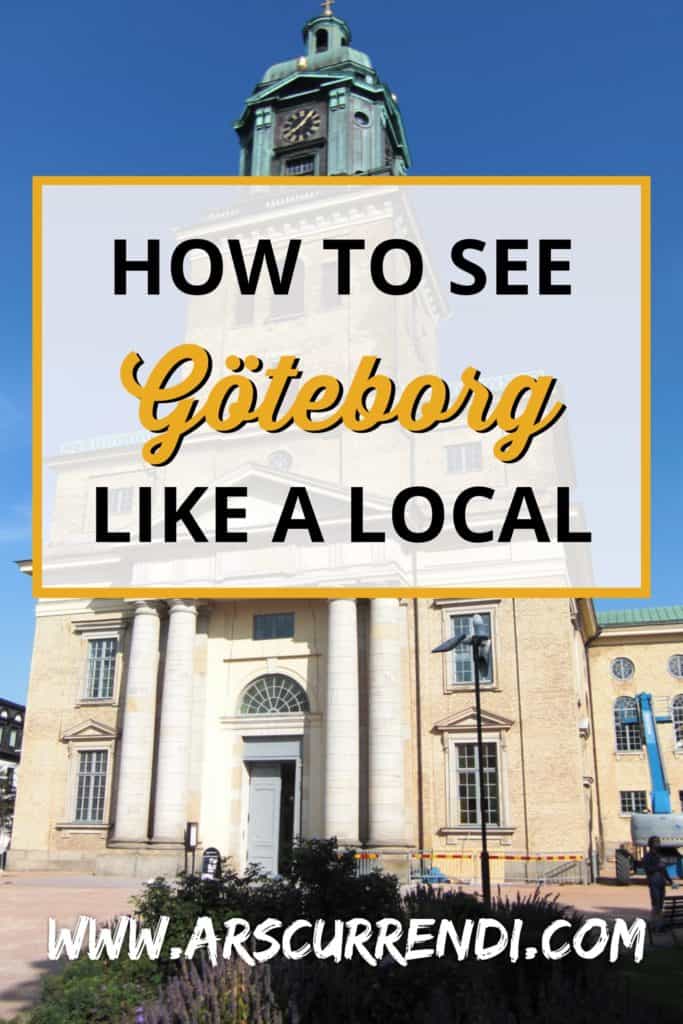
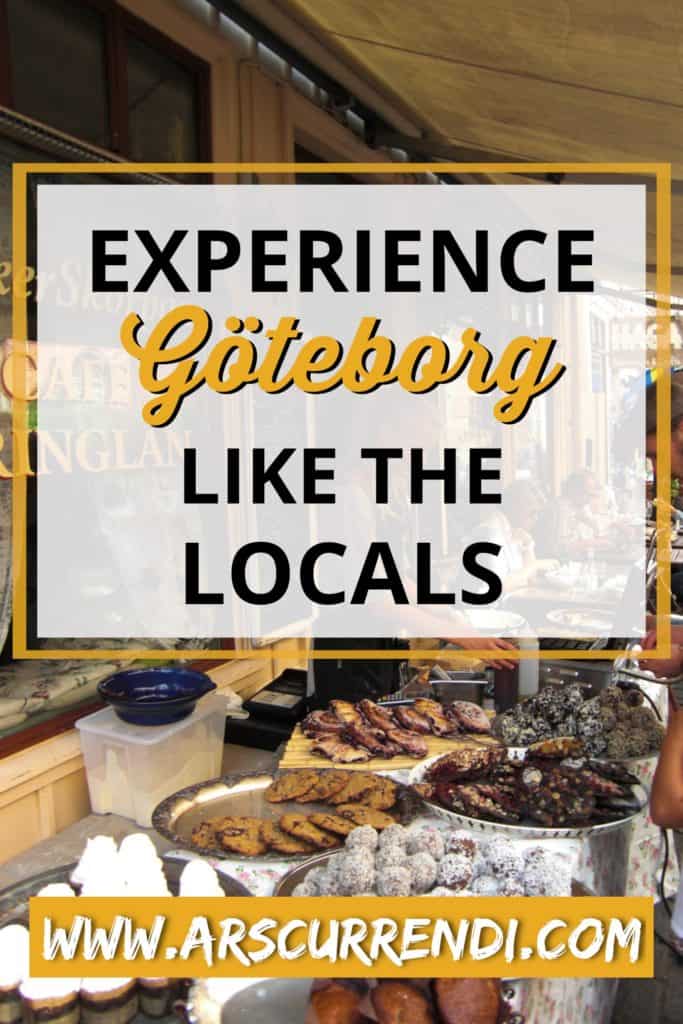
Design by NXNW.